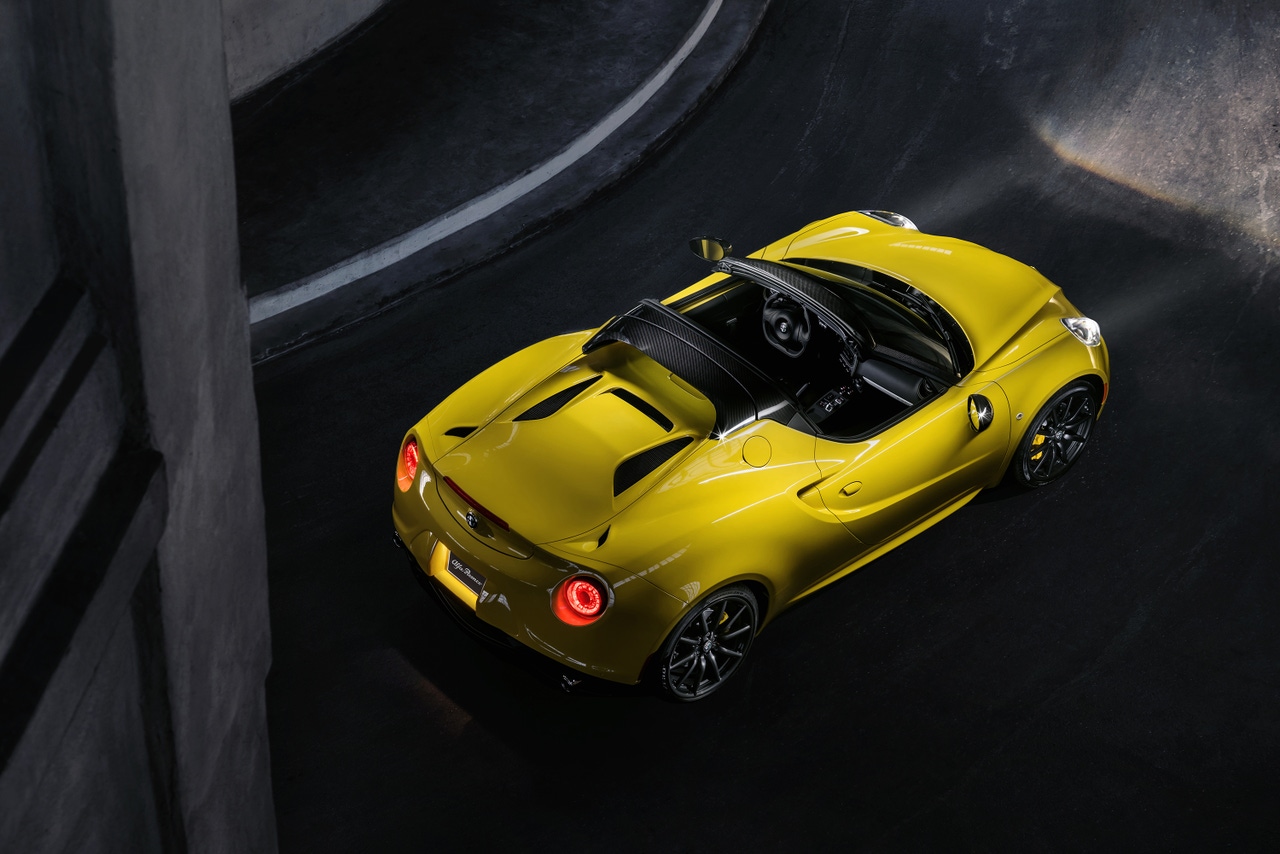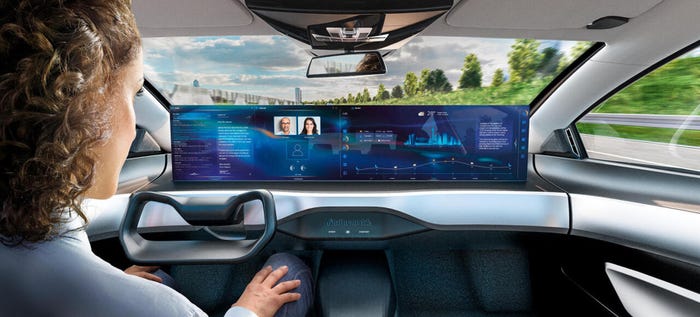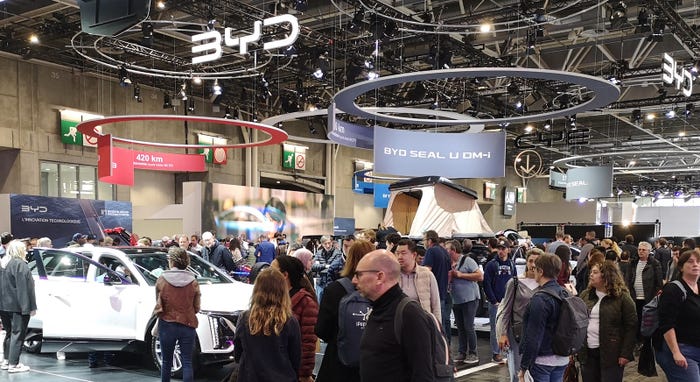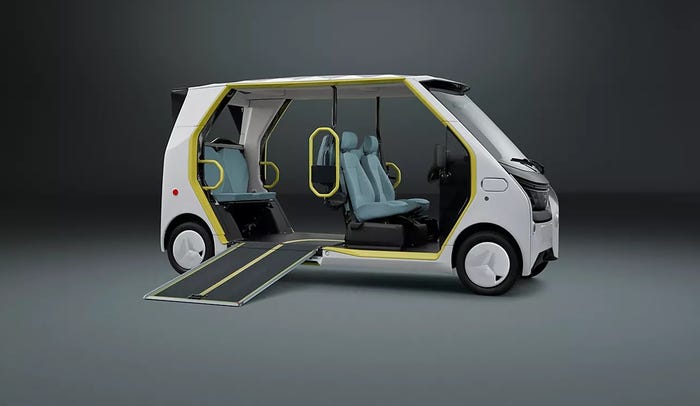Here’s Hoping This Alfa Romeo Spider Won’t Bite
Alfa left the U.S. amid chronic complaints of product unreliability. The returning Italian automaker says this time it’s different.

DETROIT - Ask people of a certain age what they remember about the Alfa Romeo Spider, and they may cite its appearance in a memorable movie.
In a final scene, a then-young Dustin Hoffman dramatically drove the Italian convertible sports car to get to the church on time.
But “The Graduate,” dates to 1967. Brand identification drawing from a 48-year-old movie lacks modern market relevancy. Except among enthusiasts, Alfa went out of sight, out of mind when it stopped selling cars in the U.S. in 1996.
FCA, the newly named alloy of Fiat and Chrysler, invokes other elements of the past – mainly Alfa’s racing heritage and more than 100 years of vehicle making – as the sure now international automaker unveils the ’15 4C Spider at the North American International Auto Show here.
“Alfa Romeo is back in the U.S.,” declares Reid Bigland, who heads the brand’s North American operations after stints of heading the Dodge and Ram brands.
The open-air Spider comes on the heels of and is largely based on the 4C Coupe that went on sale late last year, the first vehicle in the American return.
“It is red-hot, and our challenge now is just keeping up with demand,” Bigland tells journalists at the sidelines of the Spider debut, where the 2-seater shares the stage with the 4C Coupe and a couple of classic Alfas.
Coupe pricing starts at $55,000 and runs to $70,000 for 500 special editions. The Spider will cost more although FCA has yet to announce how much more. The car with a detachable roof is not quite a convertible. It goes on sale first in Europe, then this summer in the U.S.
Alfa’s return to the U.S. is noteworthy, but its departure nearly 20 years ago was rather ignoble. Sales were poor, as was the overall quality of the product offerings at the time. They were strikingly unreliable premium cars. It was amazing Dustin Hoffman got to the church without the car breaking down.
Bigland says he won’t fixate on a past that includes problem vehicles that failed to live up to an iconic brand name.
“Alfa has had a 105-year history, and there were a lot of cars in that time,” he tells WardsAuto. “I’m focusing on the future.”
But back to “The Graduate” for a moment. In one scene, an elder offers “one word of advice” to Dustin Hoffman’s Ben Braddock character: “Plastics.”
That was supposed to convey a certain shallowness of society. But had Ben invested in plastics, he would have had enough money to buy another Alfa, a Lamborghini, Ferrari, Maserati and a big yacht anchored at the Italian Riviera.
Plastic has become a major material, and it is used generously in vehicles. But the star material in the 4C Coupe and Spider is carbon fiber. Expensive, strong and lightweight, it is finding its way into more luxury vehicles. Two words of advice to young investors: “carbon fiber.”
The 4C features a carbon-fiber monocoque chassis. So does the Spider that borrows curvy design cues from its coupe sibling. The Spider also has a carbon-fiber windshield frame and a carbon-fiber hardtop roof.
Because of the carbon-fiber structure, the 4C Spider features the same structural rigidity as the coupe without weight-adding reinforcements.
“There are only five cars in the world that have a carbon-fiber chassis, mid-engine setup and aluminum sub-frames,” Bigland says. “We have a very differentiated offering, so there are very few competitors.”
The estimated number of Spider deliveries “is to be determined,” he says, adding that 4C coupe sales have done well so far. “It’s a function of how many we can build; a few thousand. It’s “obviously an exclusive market.”
The powertrain of both cars is an all-aluminum 1.7L turbocharged inline 4-cyl. engine producing 237 hp and 258 lb.-ft. (349 Nm) of torque. Other mechanical highlights: direct injection, dual intercoolers and variable-valve timing.
Alfa says the 4C Spider has a top speed of 160 mph (257 km/h) and can accelerate to 60 mph (97 km/h) in 4.1 seconds. That’s 1.3 seconds faster than a Porsche Cayenne, Bigland notes.
The engine pumps out 135 hp per liter, and if you somehow don’t feel the force of that, you will hear it. “The exhaust note is specially tuned so that it gargles at idle and roars when the throttle is wide open,” Bigland says.
It may offer too much acoustical accompaniment. During Ward’s 10 Best Engines evaluations, one judge said the coupe was a blast to drive, but quipped his ears were ringing the next day.
Alfa appeals to “well-heeled enthusiasts,” Bigland says. “I think it will resonate with American consumers. It’s a great brand with a great history and it will appeal to people who are looking for an alternative to the existing luxury cars in the U.S. today.”
More Alfas are to come. “Next on the docket is a mid-size sedan,” he says. In all, eight all-new models come to the U.S. in the near future.
Currently, Alfa has about 100 U.S. dealers, with another 100 expected to join the ranks this year. They’re dualed with other FCA brands: Fiat, Maserati and Ferrari.
“We will establish stand-alone Alfa dealers when we get more critical mass of product,” Bigland says.
FCA has invested $6 billion in the brand, he says, calling it an unprecedented commitment that includes 1,000 dedicated engineers in Italy.
“All Alfas entering the U.S. will share the same characteristics: state of the art technology, performance and that drop-dead gorgeous Italian design,” he says. “Alfa is back.”
About the Author
You May Also Like



.jpg?width=700&auto=webp&quality=80&disable=upscale)

